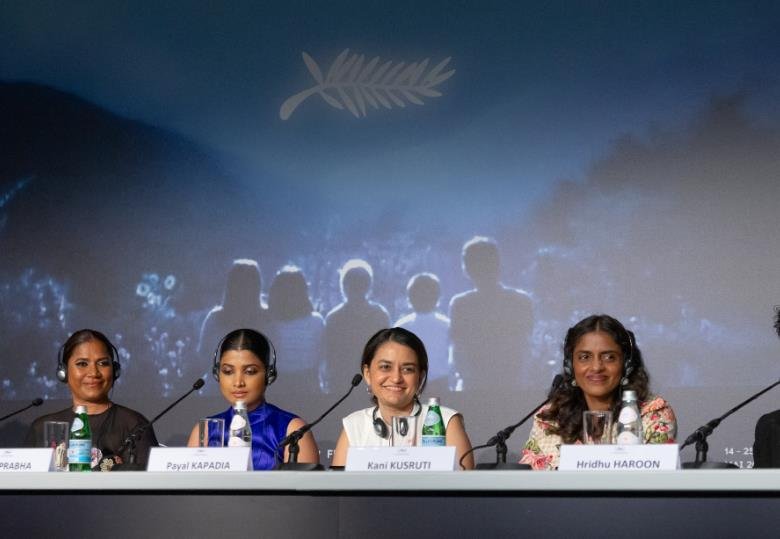Payal Kapadia’s debut feature, All We Imagine As Light, has stunned audiences worldwide, shining a spotlight on the struggles of women in Mumbai. The film not only captivated Cannes audiences but has become a powerful commentary on the persistence of misogyny and inequality in Indian society.
Kapadia’s dreamlike portrayal of two nurses navigating the complexities of life, love, and gender in Mumbai is more than just a reflection of the city; it’s a profound critique of the structures that continue to oppress women. Here, Kapadia speaks about the inequalities women face, the challenges of being a woman in the Indian film industry, and the lasting impact of the patriarchy on both her characters and herself.
Challenging the Status Quo in a Patriarchal Society
For Payal Kapadia, Mumbai is a city like no other. But in All We Imagine As Light, it is not the bustling streets or the neon lights that define it. Rather, it’s the people who shape the city’s ever-changing character. “Mumbai is not defined by iconic buildings or ancient history. It is shaped by the lives of millions who come here in search of work and survival,” Kapadia explains.
In a country where the film industry is dominated by male directors, producers, and actors, Kapadia’s work is a bold statement of resistance. “Women in India are often made to feel as if they are competing against one another,” she says. “It’s exhausting, and it feeds into this idea that there’s only space for one woman to succeed.”
Her characters, like the nurses at the centre of her story, are trapped between these harsh realities. Struggling with gender expectations, they must find ways to survive within an oppressive system that continues to marginalise them. Yet Kapadia’s direction reveals a softer, more nuanced side of this struggle, one that speaks to the emotional and psychological toll of living under such societal pressure.

A Film Rooted in Reality, Yet Dreamlike in its Execution
One of the most striking aspects of All We Imagine As Light is its dreamlike quality. The film uses surreal imagery to reflect the inner turmoil of its protagonists. Kapadia admits that this blending of reality and fantasy was crucial in telling the story. “I wanted to make a film that felt like a journey through the psyche of these women,” she says. “Their lives are harsh and unforgiving, but there is also beauty in how they navigate that, even in moments of quiet rebellion.”
Set against the backdrop of Mumbai, the film paints a portrait of two women, Paro and Radhika, who work as nurses. Their daily routines are filled with invisible emotional labour, yet they find solace in each other’s company, exploring the complexities of love, desire, and friendship. In these moments of quiet introspection, Kapadia challenges the notion that women’s lives are solely defined by their relationships with men.
Despite the heavy themes, Kapadia’s direction offers a meditative space for the characters to breathe and reflect. “There’s this constant tension between what’s expected of women and what they want for themselves,” she says. “The film’s dreamlike quality reflects that tension, blurring the lines between reality and fantasy.”
Breaking New Ground in Indian Cinema
The success of All We Imagine As Light at the Cannes Film Festival has been a watershed moment for independent Indian cinema. In May 2024, the film made history as the first Indian film in 30 years to compete for the prestigious Palme d’Or. More importantly, Kapadia became the first female Indian director to be nominated for the award.
“It was a surreal experience,” Kapadia reflects. “To be a part of the competition and to receive the Grand Prix was validation that there is an appetite for films that tell different stories. Films that challenge the status quo.”
Her achievement is even more significant considering the challenges that independent filmmakers face in India. “Unlike in other countries, we don’t have the kind of government-backed institutions that support independent cinema,” she explains. “In India, filmmakers have to work extra hard to get their films seen. Getting distribution for an independent film is always a struggle.”
But All We Imagine As Light has defied those odds. It is one of the most widely distributed Indian independent films in recent memory, and its success has led to further recognition both in India and internationally.
Misogyny in the Indian Film Industry
Despite her success, Kapadia’s path to the top has been fraught with its own set of challenges. The Indian film industry, long dominated by men, can be a difficult space for women to navigate. Kapadia admits that sexism and gender bias are rife within the industry, often limiting women to certain roles or genres.
“I’ve been told many times that my work is ‘too personal,’ ‘too niche,’ or ‘too experimental,’” she says. “There’s this expectation that women filmmakers should tell stories that fit into what’s expected of women. But my stories are not just about women; they’re about people, emotions, and the complexity of human lives.”
Yet, despite these challenges, Kapadia remains optimistic about the future of women in cinema. “Things are changing,” she says. “There’s more room for diversity, for different voices. And that’s something that needs to continue. We need more stories that reflect the realities of women, not just in India, but all over the world.”
The Emotional Weight of Creating ‘All We Imagine As Light’
Kapadia admits that the process of making the film wasn’t just an artistic pursuit; it was also deeply personal. “The themes of the film are something that I’ve been thinking about for a long time,” she shares. “The sense of being haunted by societal expectations, by what we’re told we should be, is something I know well.”
As the film continues to earn accolades and find audiences, Kapadia reflects on what she hopes viewers take away from it. “I want people to see this as more than just a story about women in Mumbai,” she says. “It’s a story about all of us. About how we all struggle against the forces that try to define us. And how, in that struggle, we sometimes find light.”








